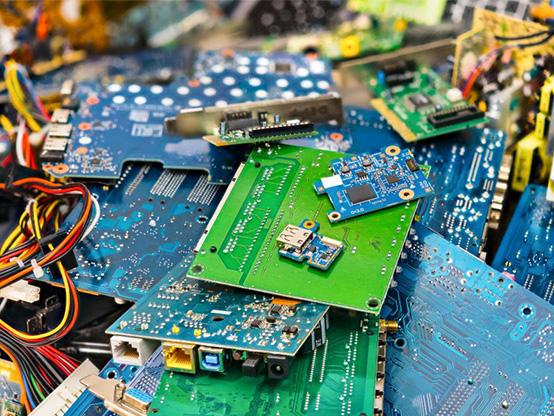
Today, the Commission has adopted a set of policy recommendations for Member States to improve and incentivise the return of used and waste mobile phones, tablets, laptops and their chargers. The recommendations aim to support national authorities to ensure maximum collection rates and subsequent re-use, repair, refurbishment and recovery of these small electronic devices.
The collection rate of small electronic devices across the EU remains low. For example, the collection rate of mobile phones is reported to be under 5% and an estimated stock of 700 million unused and waste mobile phones are stored in households across the EU.
These devices are also rich in precious materials, in particular critical raw materials. One smartphone alone contains rare earths in the magnet, cobalt in the battery, indium in the screen, and tantalum, gallium and precious metals in the printed-circuit board.
Increasing the repair and re-use of small electronics as well as recycling of waste from such equipment will support the shift to a circular economy, contribute to the security of supply for critical raw materials and energy, and enhance the EU’s strategic autonomy.
The policy recommendations include:
-
Financial incentives such as discounts, vouchers, deposit-return schemes, or monetary rewards. The incentives should target small consumer electronics that no longer work but remain lying around in households’ drawers. They should also target small working electronics that people no longer use but can still be resold, reused or repaired. When using these incentives, consumers need to be equipped to make informed decisions, for instance they should be able to calculate the value of a device.
-
Increasing the use of postal services to return used and waste mobile phones, tablets and laptops, for example by providing pre-paid envelopes or labels to consumers to return their devices.
-
Establishing partnerships between reuse organisations and operators of take-back schemes and setting reuse and preparation for reuse targets.
-
Increasing awareness and improving the convenience and visibility of collection points where people can return small electronics. Information about the nearest take-back points can be added to user-friendly maps, search tools and applications. At the take-back points, people should also be made aware that all personal data stored in their devices is properly managed and deleted correctly.
There are more than 700 million old phones lying around in our drawers – that’s almost two for every person in the EU. Citizens often find it difficult to decide what to do with them. We can make it clearer and easier how to get such products returned, repaired and recycled. Today’s recommendations focus on effective measures and incentives to increase the collection rate of small electronics across the EU, giving them a second life. It’s a win-win – people can benefit in many ways, while the circular economy grows and we don’t lose critical raw materials.
Commissioner for Environment, Oceans and Fisheries, Virginijus Sinkevičius
Next steps
Member States are invited to consider the Commission Recommendation and take relevant actions to support the effective implementation of EU waste legislation on electrical and electronic equipment (WEEE Directive), in particular the separate collection and take-back obligations to be enforced by Member States.
Background
Since 2002, the EU has regulated waste electrical and electronic equipment (WEEE) to prevent and reduce its harmful impacts on the environment and human health. The Commission evaluated and revised the WEEE Directive in 2012. The Directive provides for the separate collection of WEEE and requires Member States to set up take-back systems to allow consumers to bring back such waste. Specific responsibilities are laid down for municipalities, producers, distributors and retailers. The Directive has set ambitious targets not only for the collection of WEEE but also for preparation for re-use, recycling and recovery.
Both the European Green Deal and the Circular Economy Action Plan call for exploring options to improve the take-back of small consumer electronics. The Commission conducted a study that analysed different types of take-back schemes.
On this basis and taking into account the importance of recovering critical raw materials from WEEE as addressed in the Commission Communication on a secure and sustainable supply of critical raw materials in support of the twin transition, the Commission adopted this Commission Recommendation addressed to Member States to specifically improve the rate of return of these devices.
More information
Details
- Publication date
- 6 October 2023
- Author
- Directorate-General for Environment

